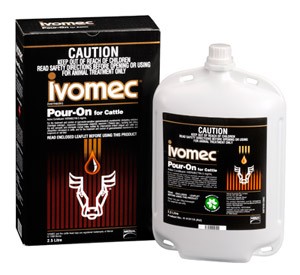With summer fast approaching, now is the time to start thinking about summer drenching of cattle as part of your strategic roundworm control program. In south-eastern Australia, Ostertagia ostertagi (small brown stomach worm) is the major cause of production losses from worm infections in cattle.
| The other main types include; Trichostrongylus axei (stomach hair worm) and Cooperia (intestinal worms). Most cattle are usually infected with a mix of different worm species, and control measures for Ostertagia, will also control other roundworms of lesser importance. Cattle are more tolerant to roundworms than sheep and goats, with worms mostly only a problem in young cattle (up to about 18 months of age), as adult cattle generally develop good resistance or immunity. Symptoms in cattle of worm infestation can include reduced growth (it’s not uncommon for a ten per cent reduction in performance, with no obvious signs), and scouring (mostly in winter). Even if signs of worms are not seen every year, there may still be a loss of weight gain, which is a common but hidden cost of parasites. A routine worm control program is worthwhile insurance, especially in areas with medium and high rainfall. Strategic worm control programs (keeping parasite numbers below those that will cause production losses) aim to reduce the impact of worms, particularly on young cattle, by both minimising worm burdens in cattle and minimising the levels of infective worm larvae on pasture. |  |
Programs should be based on the worm life cycle and seasonal patterns. Autumn and early spring provide favourable conditions for worm eggs to develop. Worms need moist and mild conditions so high temperatures and dry conditions will generally kill worm eggs and larvae. There is routine survival of some worm larvae over summer.
Drenching in the summer will break the worm life cycle. The goals for summer drenching are: no ill effects on cattle, no worm eggs shed onto the ground to keep life cycle going, and a large reduction in winter/spring worm problems. A summer drench act as a pre emptive control for worms.
As a guide the following animals should be given a summer drench:
- weaners/yearlings – can be done at the time of weaning;
- first calvers: and
- bulls.
Only treat other classes of stock on an individual basis if an issue with worms arises.
| It is important to be aware that the success of a summer drenching program will depend on the drench effectiveness. If worms are surviving drenching, then the program will be less effective. When choosing a drench, you need to look at the; effectiveness, persistence, ease of application and cost. | "Drenching in the summer will break the worm life cycle." |
Drench resistance is growing in the Australian beef cattle industry.
Recent work by a number of vets and other animal health advisors have all shown some drench resistance in ML’s and other cattle drenches.
Reduced drench effectiveness results in routine worm control programs not working as well as they should, which can result in parasitism and production loss.
Some causes of resistance are;
- under dosing,
- frequent use,
- persistent activity,
- drenching in situations favouring resistant worms (when all surviving worms are resistant ones), application method and continued use of less-effective drenches.
Steps that producers can implement to help with drench resistance include:
- Follow an annual drenching program - helping to reduce pasture larval contamination;
- Be aware of different stock classes that need drenching – reduce unnecessary drenching (E.g. whole herds of mature cows);
- Improve drench dosing accuracy - weigh a selection of the mob, to get an indication of the weight range;
- Correct application technique;
- Incorporate combination products into drench programs;
- Regular drench checks – take a worm egg count (WEC) 14 days after drenching (preferably with a WEC just before drenching as well) to monitor drench efficacy.
Acknowledgement: Courtesy of Agscene, the Department of Primary Industries Victoria.


